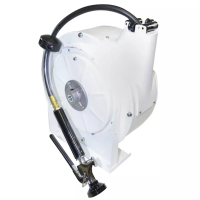Lit. No. 41298, Rev. 01 February 15, 2019
28
THEORY OF OPERATION
Snowplow Daytime Running Lights
Because Daytime Running Lamps (DRLs) are
controlled differently on some vehicles, two
Isolation Modules have been developed.
The standard Isolation Module transfers the DRL
output from the vehicle headlamps to the snowplow
lights when the vehicle ignition switch is turned ON
and the snowplow is attached.
The second Isolation Module, designed for
vehicles with dedicated DRL bulbs, senses the
vehicle in the DRL mode and a series of relays
energize, placing the snowplow low beams in
series. This Isolation Module does not turn off the
vehicle's dedicated DRLs.
SNOWPLOW HYDRAULICS
The HT Series™ snowplow hydraulic system
performs four blade movements.
All functions require the vehicle ignition (key)
switch to be in the "ON" or "ACCESSORY" position
and the power to be activated on the snowplow cab
control.
Three of the four hydraulic movements require
energizing the electric motor and appropriate
solenoid cartridge valves. The fourth function,
LOWER, does not energize the motor but requires
activating a cartridge valve.
Power from the vehicle battery is supplied to the
solenoid coils and the snowplow control via the
Isolation Module. The solenoid cartridge valves
operate in various combinations, directed by the
cab control, to send hydraulic fl uid to the snowplow
lift and angle rams and/or back to the reservoir.
(Power is supplied to the Plow Module via the
battery cable and motor relay connection.)
MOVEMENT
BLADE
RAISE
LOWER
ANGLE
RIGHT
ANGLE
LEFT
Overview
The Isolation Module acts as an electrical hub,
automatically directing vehicle power to the
appropriate vehicle or snowplow lighting devices,
while also supplying battery power to the snowplow
control.
The vehicle high and low beams enter and exit the
Isolation Module through port B (left side lighting)
and port C (right side lighting). Park, turn, and DRL
signals also enter through ports B and C.
3-PORT MODULE ELECTRICAL
The output of the vehicle high beam/low beam
select switch is directed to the Isolation Module
via the plug-in harness. When the snowplow is not
attached to the vehicle, the signal passes through
the normally closed relay contacts to the vehicle
headlamps. During this time, the Isolation Module
is inactive, placing no current draw on the vehicle's
electrical system.
With the snowplow attached, the Isolation Module
is still inactive until either of the two following
conditions are met: the vehicle parking lights are
turned ON or the vehicle ignition switch is turned
ON.
Turning ON the vehicle parking lights activates
a series of relays, automatically transferring the
vehicle high and low beams to the snowplow while
supplying battery power directly to the snowplow
parking lights. All snowplow lighting exits the
Isolation Module through port A.
Turning ON the vehicle ignition switch energizes
a snowplow control relay, supplying vehicle
battery power directly to the control via the vehicle
control harness and plug-in harness. The vehicle
ignition switch also supplies power to the vehicle
turn signals. Activating the vehicle turn signals
energizes the turn signal circuit, which supplies
vehicle battery power directly to the snowplow turn
signals.

